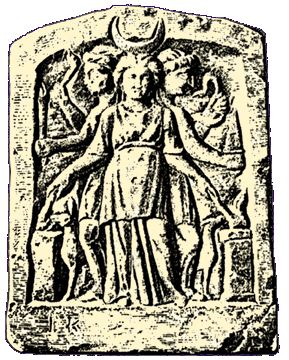So, I'm back from Ireland and already missing it. So many things left unseen, so much to still experience.
Here's some pictures:
Two days were spent roaming around Dublin. Really, no time at all to get even the feel of it. We did manage to find the allmighty Epicurean Food Hall (really...only the Irish...) and of course, Temple Bar, the tourist Trap.
The other days were spent around the Wicklow Mountains and visiting some Megalithic sites. The first picture is the lovely view of Dublin from the montains, and the second is the view of the Boyne valley from the top of Cnobha.
This is Cnobha entrance and the back stone (which we were introduced to as a calendar) of Newgrange. I wont post the "70's bathroom wall" they built over the site because...it makes my eyes bleed. On a positive note, on the musealization of Cnobhá they left the stones of the outer shell untouched, which is good news for researchers (apparently, Kelly didnt even photograph the "outer shell" (have no idea what the term is in english) for later record (Go go!)
'Twas lovely, the Irish are great, Ireland is beautiful, but I was homesick at the end of it and needing proper food. The cherry on top of the cake was the lovely surprised i got when i finnaly arrived home. Birthday presents from Finland! A friend sent me a lovely card of witchy zodiac and it reads:
Virgo:
Belongs to the family of Healers
Special: Flies rarely because she is busy doing scientific witchcraft research.
When other witches play around bonfires, this one goes through encyclopedies about Witchcraft in other countries vigorously. Her nickelpots shine cleanly and her broom its always straight in its racle.
 All kinds of wisecracking and picking on details are her preferred hobbies and nobody will be saved from her malicious mocking.
All kinds of wisecracking and picking on details are her preferred hobbies and nobody will be saved from her malicious mocking.Pet: Hedgehog
Favourite food: Cactus pancakes and foreign exotic delicacies.
Wand: Rowan with jaspe.
Most important thing in the shelves: Herbal guides
Favourite hobbies: Wisecracking, mocking and nagging.
Overall, quite accurate. Next I had the "Sex Tips for Husbands and Wives", from the lovely Mrs. Smythers but don't think for a second this was some kinky vintage sex advice, oh no, this was advice on how to avoid the horrible practice of coitus between man and woman. Mrs. Smythers lovingly tells us that:
" While sex is at best revolting and at worse rather painful. it has to be endured...One cardinal rule of marriagge sould never be forgotten: give little, give seldom, and above all, give grudgingly"
And for this she sagely points out that
" One heartening factor for which the wife can be gratefuul is the fact the husband's home, school, church, and social environment have been working together all through his life to instill in him a deep sense of guilt in regards to his sexual feelings so that he comes to the marriage couch apologetically and filled with shame, already half cowed and subdued.
The final outcome being:
The wise wife seizes upon this advantage and relentlessly pursues her goal first to limit, later to annihilate completly her husband's desire for sexual expression.
Lovely isnt it?
























